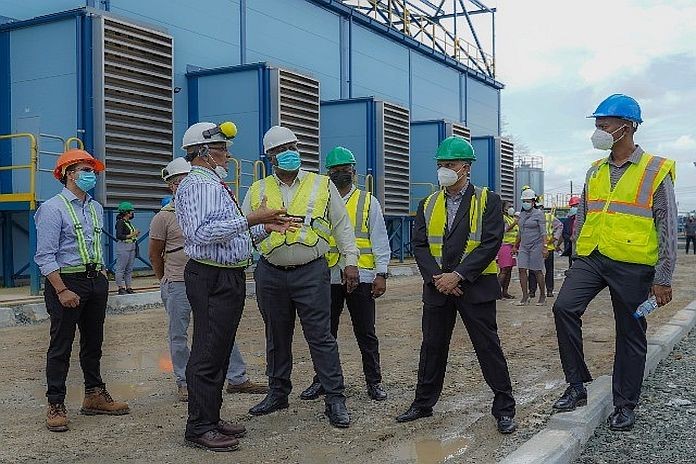By Kemol King
GEORGETOWN, Guyana, (DPI) – The government is implementing a plan for a gas-to-energy project which will deliver 250 megawatts (MW) of power from a Wales gas-fired plant to the grid, to save on costs and emissions associated with power generation; however, its natural gas programme extends beyond the Wales operation, as it is preparing more power plants to be fueled by natural gas.
“[Guyana Power and Light Inc.] GPL plans to convert 106MW of their existing [heavy fuel oil] HFO capacity to dual-fuel engines (HFO/NG) by 2026,” states the low carbon development strategy (LCDS) 2030 draft.
This adds to new reciprocating 46 MW dual fuel (HFO/NG) engines which were added to the grid in 2021, located at Garden of Eden on the East Bank of Demerara. The dual-fueled engines will build on Guyana’s firm capacity, adding to the gas-to-energy infrastructure.
“The government is currently undertaking the detailed studies and the financing structuring of the [gas-to-energy] project,” LCDS 2030 states. “It is anticipated that a 250 MW gas-fired power plant will be constructed and in operation in 2024.”
For the Wales operation, investments are needed into the pipeline to transport the gas from the Liza field, a processing plant to separate the Liquefied Petroleum Gas (LPG) and the Natural Gas, and a gas-fired power plant.
The total capacity to generate electricity with natural gas from all of the plants will be 403MW.
Multiple government-commissioned studies have confirmed that utilising natural gas would reduce the cost of power generation. The studies have also confirmed that substituting HFOs for natural gas will significantly reduce emissions.
LCDS 2030 states that the implementation of this plan would reduce, by half, the greenhouse gas (GHG) emissions associated with electricity generation. While natural gas would provide all of these benefits, they will only serve Guyana in the short term, while the country develops capacity for renewable energy options.
In the meantime, the government and the private sector will explore options for solar power, hydropower, wind power and biomass technologies.





